
This list contains buildings and structures on Broadway in Manhattan, New York City.

This list contains buildings and structures on Broadway in Manhattan, New York City.

Broadway is a street and major thoroughfare in the U.S. state of New York. The street runs from Battery Place at Bowling Green in the south of Manhattan for 13 mi (20.9 km) through the borough, over the Broadway Bridge, and 2 mi (3.2 km) through the Bronx, exiting north from New York City to run an additional 18 mi (29.0 km) through the Westchester County municipalities of Yonkers, Hastings-On-Hudson, Dobbs Ferry, Irvington, Tarrytown, and Sleepy Hollow, after which the road continues, but is no longer called "Broadway". The latter portion of Broadway north of the George Washington Bridge/I-95 underpass comprises a portion of U.S. Route 9.
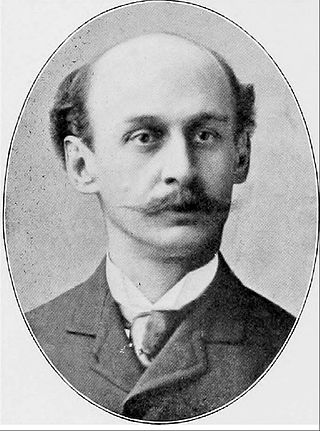
Henry Janeway Hardenbergh was an American architect, best known for his hotels and apartment buildings, and as a "master of a new building form — the skyscraper." He worked three times with Edward Clark, the wealthy owner of the Singer Sewing Machine Company and real estate developer: The Singer company's first tower in New York City, the Dakota Apartments, and its precursor, the Van Corlear. He is best known for building apartment dwellings and luxury hotels.
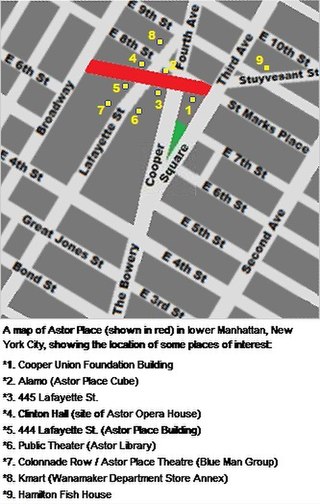
Astor Place is a street in NoHo/East Village, in the lower part of the New York City borough of Manhattan. It is divided into two sections: One segment runs from Broadway in the west to Lafayette Street, and the other runs from Fourth to Third Avenues. The street encompasses two plazas at the intersection with Cooper Square, Lafayette Street, Fourth Avenue, and Eighth Street – Alamo Plaza and Astor Place Station Plaza. "Astor Place" is also sometimes used for the neighborhood around the street. It was named for John Jacob Astor, soon after his death in 1848. A $21 million reconstruction to implement a redesign of Astor Place began in 2013 and was completed in 2016.
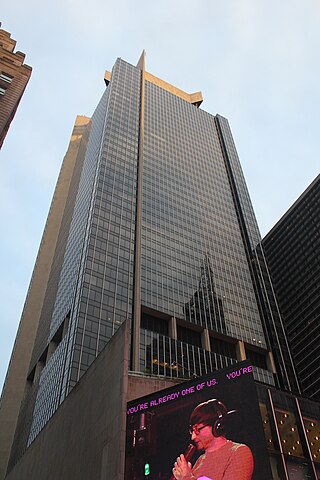
One Astor Plaza, also known as 1515 Broadway and formerly the W. T. Grant Building, is a 54-story office building on Times Square in the Theater District of Midtown Manhattan in New York City. Designed by Der Scutt of Ely J. Kahn & Jacobs, the building was developed by Sam Minskoff and Sons. One Astor Plaza occupies a site bounded by Broadway to the east, 45th Street to the north, Shubert Alley to the west, and 44th Street to the south. The building is named for the Hotel Astor, which had occupied the site from 1904 to 1967. SL Green Realty and Allianz own One Astor Plaza, which as of 2022 serves as the headquarters for Paramount Global.

Hotel Astor was a hotel on Times Square in the Midtown Manhattan neighborhood of New York City, United States. Built in 1905 and expanded in 1909–1910 for the Astor family, the hotel occupied a site bounded by Broadway, Shubert Alley, and 44th and 45th Streets. Architects Clinton & Russell designed the hotel as an 11-story Beaux-Arts edifice with a mansard roof. It contained 1,000 guest rooms, with two more levels underground for its extensive "backstage" functions, such as the wine cellar.
A weather beacon is a beacon that indicates the local weather forecast in a code of colored or flashing lights. Often, a short poem or jingle accompanies the code to make it easier to remember.

The Astor House was a luxury hotel in New York City. Located on the corner of Broadway and Vesey Street in what is now the Civic Center and Tribeca neighborhoods of Lower Manhattan, it opened in 1836 and soon became the best-known hotel in America. Part of it was demolished in 1913; the rest was demolished in 1926.
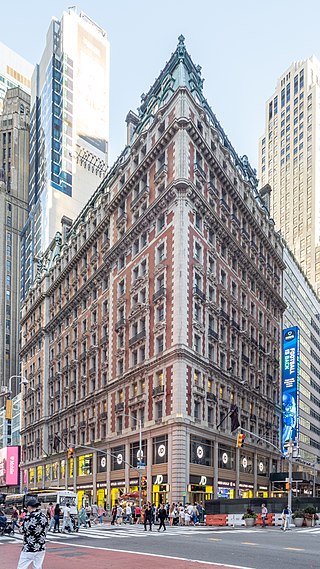
The Knickerbocker Hotel is a hotel at Times Square, on the southeastern corner of Broadway and 42nd Street, in the Midtown Manhattan neighborhood of New York City. Built by John Jacob Astor IV, the hostelry was designed in 1901 and opened in 1906. Its location near the Theater District around Times Square was intended to attract not only residential guests but also theater visitors.

Lafayette Street is a major north–south street in New York City's Lower Manhattan. It originates at the intersection of Reade Street and Centre Street, one block north of Chambers Street. The one-way street then successively runs through Chinatown, Little Italy, NoLIta, and NoHo and finally, between East 9th and East 10th streets, merges with Fourth Avenue. A buffered bike lane runs outside the left traffic lane. North of Spring Street, Lafayette Street is northbound (uptown)-only; south of Spring Street, Lafayette is southbound (downtown)-only.
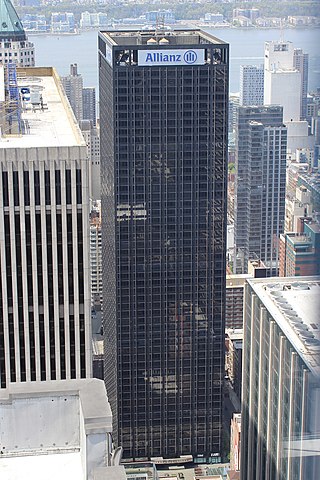
Paramount Plaza, also 1633 Broadway and formerly the Uris Building, is a 48-story skyscraper in the Midtown Manhattan neighborhood of New York City. Designed by Emery Roth and Sons, the building was developed by the Uris brothers and was renamed for its owner, the Paramount Group, by 1980. Paramount Plaza occupies a site bounded by Broadway to the east, 51st Street to the north, and 50th Street to the south.
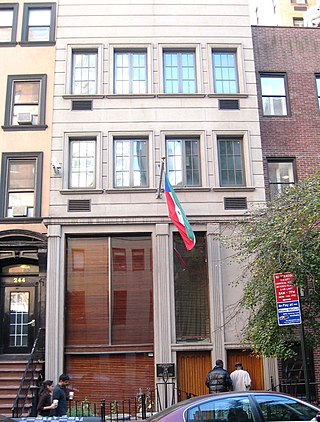
51st Street is a 1.9-mile (3.1 km) long one-way street traveling east to west across Midtown Manhattan.
SL Green Realty Corp. is a real estate investment trust that primarily invests in office buildings and shopping centers in New York City. As of December 31, 2019, the company owned 43 properties comprising 14,438,964 square feet, and was reported to be "New York City’s largest office landlord".
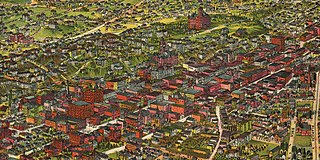
The late-Victorian-era Downtown of Los Angeles in 1880 was centered at the southern end of the Los Angeles Plaza area, and over the next two decades, it extended south and west along Main Street, Spring Street, and Broadway towards Third Street. Most of the 19th-century buildings no longer exist, surviving only in the Plaza area or south of Second Street. The rest were demolished to make way for the Civic Center district with City Hall, numerous courthouses, and other municipal, county, state and federal buildings, and Times Mirror Square. This article covers that area, between the Plaza, 3rd St., Los Angeles St., and Broadway, during the period 1880 through the period of demolition (1920s–1950s).
The following is an alphabetical list of articles related to New York City. New York City is a city in the United States state of New York.